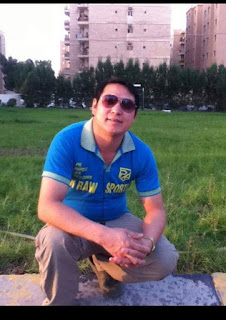DASHAIN
INTRODUCTION
It is the longest and the most auspicious festival of Nepal. It is celebrated by all caste and creed throughout the country. It is celebrated over fifteen days during the month of Ashoj (September-October). Goddess durga in all her manifestations are with innumerable pujas,abundant offerings and thousands of animals.Goddess durga in all her manifestations are with innumerable pujas,abundant offerings and thousands of animals.
Why it is celebrated?
- The main celebration glories the triymph good over evil.
-victory of goddess durga over demon mahisasura
-victory of lord ram over demon ravan.
How it is celebrated?
- The first nine days signify the nine days of battle between goddess durga and the demon Mahisasur.
- The tenth day is the day when Mahisaur was killed.
- The last five days symbolize the celebration of the victory with blessing of the goddess.
Day1_Ghatasthapana :
It is the first day of Vijaya. Ghata means "pots or vessels" and sthapana means "to establish". Combining both words the literal meaning to establish a pot. Ghatasthapana is also known as kalasthapana as kasal also a type of water vessel.
Day7_phulpati:
Phulpati is a major celebration occurring on the seven day of Dashain Phool is flower and Pati is leaves and plants. Fulpati literally means flowers, leaves and plants. There is a tradition in Nepal of bringing nine types of phoolpati into the Pooja room of the house with a celebration in the seventh day of navaratri Pooja. Therefore, the seventh day of Vijaya Dasha is also called phoolpati in Nepal.
Day8_Maha asthami:
The Maha asthami which is also known as durgasthami or veerasthami is the eight and one of the most important days of the Dashain festival. In this day goddess durga (which means unfeatable in sanskrit) and goddess Kalo are worshipped with dedication.
Day9_ Mahanavami:
The ninth day of Dashain is called mahanavami, the great ninth day. This is the last day of navaratri. Ceremonies and rituals reach the peak on this day. On this day, official military ritual sacrifice are held in one of hanuman dhoka royal palaces, the kot courtyard.
Day10_dashami:
On this day we take Tika and jamata from our elders and receive their blessing.We visit our elders in their home and get Tika from their home and get Tika from them while our younger ones come to our home to receive blessing from us.
After Dashain everyone settles back to normal. After receiving the blessing of goddess durga, people are ready to work and acquire virtue, power and anticipated one among all the festivals of Nepal.
TIHAR
Introduction
Tihar is the second biggest Nepalese festival after Dashain. It is considered to be of great importance as it shows a contribution to not just the humans and the gods, but also to the animals like cows, crows and dogs that maintain relationship with humans.
Day1_kaag Tihar(Crow) :
Kaag tihar is the first day of tihar festival of Nepalese hindu people. In the particular day crow is worshipped. Religious belief in Nepal regard crow as messenger of lord yamaraja the God of death.
Day2_kukur tihar(dog) :
The second day is called kukur tihar. People offer garlands Tika and delicious food to dogs and acknowledge the cherished relationship between humans and dogs.
Day3_Gai tihar and laxmi puja(cow) :
The morning of the third day is gai tihar(proud of having the cow). In Hinduism cow signifies prosperity and wealth. In ancient times people benefited a lot from the cow. Its milk, dung, even urine was used for purposes like purification.
Day4_Govardhan puja :
Mainly ox is worshipped in this day by giving different foods. It is observed as goru tihar or goru puja(worship of the oxen).
Day5_Vai tika(brother) :
The fifth and last day of tihar is called bhai Tika. It is observed by sisters applying tilaka or Tika to the foreheads of their brothers to ensure long life and thank them for the protection they provide.













Comments
Post a Comment